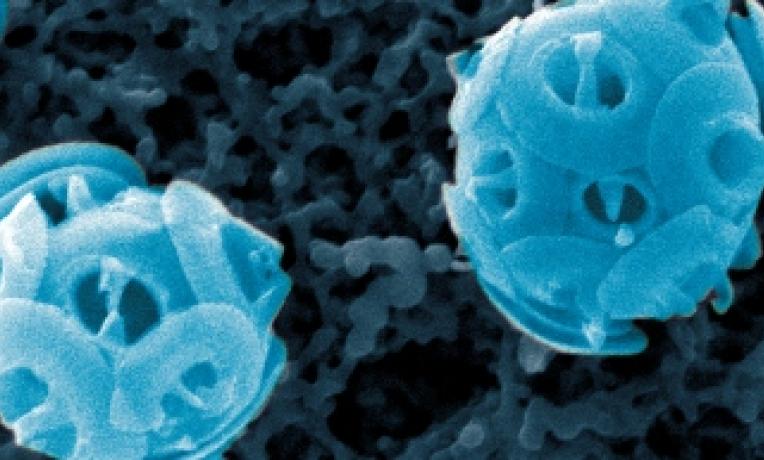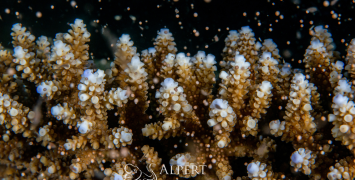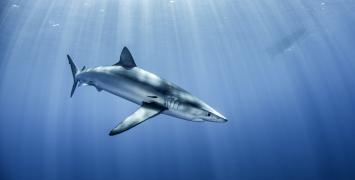Marine algae reveal close link between past climate and CO2
The ocean is filled with microscopic algae that take up carbon dioxide (CO2) from the atmosphere in order to grow. A new study by researchers from the Geology Department at the University of Oviedo (Spain) shows that the algae may adapt to rising levels of atmospheric CO2 much sooner than previously thought, and in an unexpected way. This study, published today in Nature and co-authored by ERC grantee Heather Stoll, also provides evidence for a much closer link between atmospheric CO2 decrease and cooling and glaciations in the geological past.

The amount of carbon dioxide in the atmosphere is central to climate, because it regulates the greenhouse effect. It is also central to all the earth’s plants – on land and in the sea – because it is the key ingredient used for photosynthesis. When CO2 levels are low, photosynthesis may not proceed as rapidly, so plants have developed coping mechanisms. Many marine algae use and transport supplementary “fuels”, other more abundant forms of carbon in the ocean like bicarbonate (the form of carbon in baking soda) for photosynthesis. But this approach takes extra energy and nutrients. So algae might be expected to stop this extra accumulation when CO2 increases.
The unveiled secrets of marine algae
The new study, co-authored by ERC grantee Heather Stoll and Clara Bolton, uses a new indicator to track when algae forego one of the key “coping mechanisms”. The result sheds light on both the adaptation of algae to CO2 as well as the history of CO2 in the atmosphere. Because some algae make microscopic shells that accumulate on the sea floor, just like clams make shells that accumulate on the shore, it is possible to use these fossil shells to understand how ancient algae coped with CO2 levels when they were alive. A new model of how algal cells transport carbon shows there is a change in the chemical makeup of the shells when the cell needs to use supplementary “fuels” like bicarbonate to grow. By measuring the chemistry of fossil shells in the ocean over the past 60 million years, the research team showed that algae started to rely heavily on these supplementary carbon sources relatively recently, between 7 and 5 million years ago.
Climate cooling to match CO2 decrease
This timing was rather surprising. Up until the industrial revolution, the earth’s climate had been slowly cooling for tens of millions of years, with ice caps emerging first on Antarctica 33 million years ago and then later on Greenland about 2.5 million years ago. The cooling has been broadly linked to a gradual weakening of the greenhouse effect as the atmosphere’s CO2 was slowly removed by natural processes. There is evidence for strong CO2 decreases coincident with the start of Antarctic glaciation.
However, the history of atmospheric CO2 over the last 10 million years is controversial, with many studies suggesting that CO2 level was low and constant despite long-term climate cooling over this time. Dr Stoll commented: “Today’s results suggest that CO2 was declining and crossed a critical threshold between 7 and 8 million years, a result consistent with the evidence for climate cooling”.
This new study also suggests that algae adapt at levels of CO2 around 500 parts per million, levels that will most likely be attained again later in this century due to fossil fuel use. This adaptation may have consequences for the ecosystem in the surface of the ocean in the future.
This study is funded by an ERC Starting grant awarded to Heather Stoll in 2009 for her “PACE” project. According to Stoll, the ERC funding has been central to the new discovery. “The ERC grant brought to culmination a 10 year scientific dream. I first observed the concept for the new indicator 10 years ago and presented it at an international workshop on biocomplexity. But the steps I could make were very small ones until the ERC came through and let me put in place a dedicated research team in a really multidisciplinary environment. The funding helped me to bring together the biological and geological knowledge to understand both the cell and the story in the sediments.”
By relating past changes in CO2 levels to how algae adapted, Dr Stoll hopes to provide a better understanding of the carbon cycles of the atmosphere and ocean. The algae’s response to environmental changes, and their role in the carbon cycle, could offer clues on how changes in the climate, atmosphere and ocean will interact in the future.






